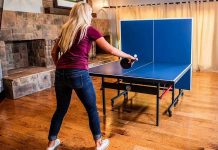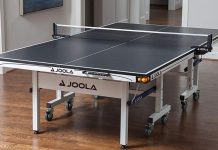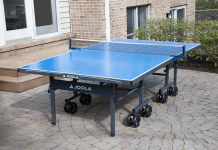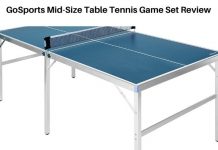If you’ve ever been around children or raised children of your own it’s no surprise to anyone they are oftentimes bored and become bored very easily. A lot of times if you have too much free time for a child they tend to become destructive and get into things they shouldn’t. I was faced with a similar conundrum with my own five year old daughter.
We had plenty of time, but not a lot of activities to fill that time. It was causing power struggles in the house. So, being the diligent mom I am, I decided to start searching out activities that she might enjoy in hopes to use up all of that extra energy.
There are a few offerings of sports and extracurricular activities in our town. One activity that I kept stumbling upon was Gymnastics.
At first, the thought of Gymnastics drums up ideas of the Olympics. I’ve always been fascinated with how acrobatic a fully trained gymnast can be.
But at the same time, watching someone perform those feats and then thinking about your child performing those same feats can make you a little nervous.
Since I was curious about what kind of moves my daughter might have to learn, I went to research what would be considered basic moves in the hopes that it would ease my fears about her doing this activity. I was relieved to find that a lot of the basic moves are pretty straightforward.
Today I’ve collected the basic skills that any gymnast should learn how to perform with an explanation of how to do these moves.
Before attempting any of these moves, you should consult a licensed professional as these are merely for instructional purposes only.
Table of Contents
Foundations
1. Balance on one foot
Before trying any more complicated moves, you should be comfortable balancing on your legs. You should be able to balance on one foot or be able to lean over and still stay steady and straight.
The best way to practice this is to stand up straight with one leg out in front of you. You can hold your arms up high or in front of you depending on what helps you balance the best. In gymnastic competitions, you will be doing lots of different motions that require various different hand movements. Try holding your arms in different ways for the best results.
Once you’re comfortable balancing with one leg in the air, you can also try and balance with your leg on a beam or on an elevated platform to increase the difficulty.
2. Turn on one foot
The best way to think about turning on one foot is to think about a ballerina. Start with your legs spread and an even space apart with your arms spread wide.
Then as you put one foot forward it will hold the weight of your whole body. Arch your arms over your head and use the ball of your foot to twist either clockwise or counterclockwise.
As you turn, fold your arms inward across your chest. Before finishing your twist, reopen your arms all the way out. Your feet should flatten as you finish your turn and your arms should be spread wide.
If you find yourself having trouble maintaining balance while doing this move, work on stretching out your back and practicing balancing on one foot some more.
3. Bridge
The Bridge can be considered a little more advanced in some groups of thought but most gymnastic moves involve flexing the body in an unusual way so this becomes a great foundation for other moves. It is prudent for students to have a good grasp of how to invert their bodies using this move.
Start by lying on your back. Slowly slide your feet towards your body until your knees are bent into a V shape. Then slide your hands up until they form a horizontal line with your shoulders.
Start to push up with your hands and feet at the same time while trying to maintain a C-like curve. Your core and chest should be arched upwards while your arms and feet can remain slightly bent downwards.
Once you become more skilled at this, you should aim to straighten your arms and legs until your body is completely horizontal and parallel to the ground.
4. Tripod
The Tripod is a prerequisite to doing a Headstand.
To begin, sit on your knees. Put your hands flat in front of you and slowly lower your head to the mat. Once your head hits the mat, keep it securely in place. It is very important that you don’t twist or shift once your head is in place. It will be holding the majority of your weight and if done incorrectly you can severely injure your neck.
Keep your hands firm and flat against the mat and slowly raise your knees so that you are putting your weight on your feet. Your elbows should be pointing backward and creating a pointed 90 degree angle.
Walk your feet slowly towards your elbows. Place one knee at a time on your elbows. Once you’re balanced, slowly raise your legs straight into the air. You should now be able to hold a Headstand.
5. Casts
Learning how to do a Cast is the building block for all bar movements. Approach the bar, and stand straight in front of it. You should focus on gripping the bar tightly as you pull yourself upwards.
Pull yourself high enough so that you are hovering over the bar height. Start straightening your arms all the way from your shoulder to your fingers.
While you’re holding the bar tightly, start to swing backward slightly until you’re able to maintain a horizontal plank like position with your hips slightly elevated. There should be a hollow gap between you in the bar.
Practice holding this position and getting up and down from the bars for the best results.
6. Cast Handstand
Once you are comfortable with Casts, the next basic move you should learn is to turn Casts into Handstands.
To perform a Cast Handstand you will have to keep your body in a diagonal angle. This requires immense upper body and core strength to maintain.
Some exercises will help you prepare to do a Cast Handstand include crunches, planks, and maintaining an arc shape while laying on the ground.
Pull yourself up onto the bar into a regular Cast. Once steady, start to angle your legs upwards over your shoulders until you’ve become completely vertical. Maintain this position as long as you can to increase endurance.
7. Straddle Sit
The Straddle Sit is a prerequisite to a Split. Start by sitting straight on the floor with your feet out in front of you.
Slowly bring your legs apart into a V shape with your toes pointed. Keep your chin up and stretch your arms parallel over your legs to extend upwards into the air. Hold this position for ten to fifteen seconds at a time to build up endurance.
8. Splits
Once you’ve mastered a Straddle Sit, you can move on to Splits. They are an essential floor skill that will take a lot of practice and flexibility to do correctly. And it takes even more work to do a Split in the middle of a routine.
Start with your arms supported on a chair or counter edge. You need something you can hold onto and then fall slowly into the position initially.
Split your legs in slow increments. Go as far as you can go while maintaining a hold on your support object. If you feel pain, rejoin your legs until the pain stops. Don’t force your body to go any further than you can comfortably do. Hold this for as long as you can.
After you’ve practiced going as far as you can, you can try to go lower at a different time. Eventually, you will be able to do a complete Split on the floor.
Rolling
9. Forward roll
Start in the standing position. Crouch down towards the floor into a squatting position. Keep your head angled forward with your chin touching your chest. Put your arms shoulder width apart.
As you begin to lean forward, use your toes to push yourself upwards and roll onto your shoulders. Keep rolling with your head tucked until you are in the seated position once more.
You should be able to keep your momentum and push off the mat into the standing position with your arms over your head. Forward Rolls are often times chained with other moves so it’s an important skill to perfect.
10. Backward roll
To start learning how to do this move, you can just sit on a mat with your knees up close to your chest and your hands at your side. Similar to the front roll, tuck your chin towards your chest. Then use your hands and slowly angle them behind you. Use your hands to start catching your body.
Keep your chin tucked, and your shoulders curved as you start to roll backward. As you build momentum, you should be able to push off the mat into a standing position.
As you get better at this technique, you will be able to start in the crouching position and use your momentum to do the Backwards Roll in a seamless fashion.
11. Log roll
Lay on your back with your hands above your head and your toes slightly pointed upward. Slowly you should try and arch your body by lifting your legs, and keeping your core muscles tight. Make your arms slightly concave as you start to roll in one direction. You should maintain this curved position by inverting it as you roll. As your stomach presses against the mat, your legs and arms curve upwards away from the mat.
Then as you start to roll back towards your back, your arms and legs will swing upwards away from the mat. Maintaining a curve throughout all of your rolling will help build core muscles and flexibility in key areas. The best way to utilize this is to maintain form throughout the entire movement and to keep practicing until you have it down to an art form.
Jumping
12. Straight Jump
Start by standing on a mat with your ankles pressed together. In one fluid motion, you will have to push off of the mat straight up while also raising your hands high over your head.
From your fingertips down to your toes you should make a straight line. As you land, put your hands back to each side. Remember to keep your toes pointed as you jump and your back straight.
13. Jump half turn
Start with your legs an even spot apart. As you prepare to jump, have your arms raised halfway in front of you, bend your knees slightly as you push off of the ground. During your jump you should twist 180 degrees from the way you were facing before.
So if you were facing to the left, you should be facing to the right. As you land, bend your knees to absorb the shock.
14. Tuck Jump
To do a Tuck Jump, you will need to stand straight on the mat. Keep your arms at your side. As you get ready to move, you’re going to want to swing your arms forward a couple of times before jumping off the ground. As you’re in the air, draw your knees up close to your chest and put your hands high above your head.
As you land, you should land with your knees bent and your arms straight out in front of you. Your torso should be completely straight and vertical to the floor.
15. Split Jump
The Split Jump is the basis for other skills like the Split Leap.
Start with your arms up in the air and your feet side by side. Take a slight jog into a skip-jump. Push off with both of your feet high into the air. Split your legs mid-jump and then land on your two feet again after you’ve crossed the small distance. Land with your hands in the air.
Balancing
16. Handstand
A Handstand is one of the many foundational skills every gymnast should know. This skill is not only used on the floor but is also be used on the bar beam, springboard, and in the middle of various other competition moves.
To learn how to do a Handstand, you should take your time and focus on building upper body strength first. You can improve your upper body strength by doing Push ups, Pike Hold, using dumbbells, and doing Arm Curls. You should also be fairly flexible before attempting a Handstand. Make sure that you stretch your arms, back, and legs first.
There are a few different ways to learn how to do a Handstand. The most common one is called Spider Man against the wall.
Put your back towards a wall. Bend over into a V shape with your hands on the floor in front of you. One at a time start putting a foot onto the wall. “Walk” your hands closer to the wall as your feet go further up the wall. Make your feet go upwards until your stomach is touching the wall. Keep yourself flat against the wall and hold the position as long as you can.
The safest way to come back down is to do the reverse of what you did to get into a Handstand.
17. Handspring on Vault
Think of this move as a Cartwheel in the middle of the air.
First, you take a running head start towards the springboard. Jump onto the springboard and keep your body straight. When your hands hit the vault, push up and over to the opposite side of the vault. If done correctly, land on your feet on the opposite side of the beam.
This is a skill that will be used for many competition moves. So it is essential that it is practiced multiple times until your form is perfectly correct.
18. Backwards Handspring
In order to do a Backwards Handspring, you’ll need to bend your legs. Keep your arms towards the back. Be ready to push off with your feet aiming backward.
When you push off, you’re going to want your body to turn into a curved arch, like an M with your hands ready to catch you from behind.
When your hands hit the mat, your legs should still be a little bit over your back and as they swing towards your chest. Finish out the jump by continuing the momentum of pushing your hands upward so you can land on your feet similar to your starting position.
It is recommended that you always have a spotter before attempting this move. You will need a lot of upper body strength and balance in order to turn this move into a regular routine. Keep your speed and flexibility in peak condition for best results.
19. Round-off
The Round-off is similar to a Cartwheel only you twist halfway through so that you can face the way you came.
To perform a Round-off, start with your legs spread and your arms high in the air. Push off with your back most foot and angle your body down towards the floor.
As your hands hit the ground, start to twist in one direction. Land a Handstand and then as your feet start to go towards your stomach, land with bent knees facing opposite the way you came from.
20. Cartwheel
To perform this move, you should stand with your arms in a V shape above your head and your legs in a similar stance. Keep your legs an even distance apart.
Depending on which direction you want to go determines which direction you should lean first. For example, if you want to have a Cartwheel towards the right, you would lean left first and then throw your weight towards the right.
Once you throw your weight, let your hands hit the ground one at a time. Push upwards with your arms while your legs swing over your upper body like wheel spokes turn. As your legs hit the ground one at a time, straighten your form to finish the move.
Conclusion
So as you can see there is actually a lot of variation in what a beginner gymnast is expected to perform. Some sources will dispute which moves and skills are more essential to a beginner.
One thing holds true despite this— Gymnastics is the combined effort of balance, flexibility, and core body strength. And lots and lots of practice.
The best thing you can do if you’re interested in learning more about this sport is to contact a local Gymnastics business. If you decide to practice any of these moves on your own, remember to take your time and it always helps to have a spotter.
Gymnastics can be a challenging and rewarding sport. But with time, patience, and a lot of practice you might even get to compete in the next Olympics.

Veronica is a Green Bay-based freelance writer and editor with extensive experience with board games. When not busy scribbling her thoughts, you might find her in her garden, hiking out in the woods, or exploring new food joints.
Veronica is a die-hard board game and chess hobbyist by night. She likes to try out new games and is always on the lookout to recruit new players for her game night (so beware!). When not playing board games or throwing darts, she is usually busy painting miniatures (or doing other nerdy stuff).
She is the CEO & Content Writer of Indoor Games Zone. She shares her expertise from years of playing chess, board games, and darts.
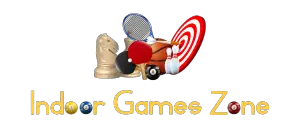
![Stiga XTR Pro Review | 1,559+ Global Ratings (In-Depth Guide) [year] Stiga XTR Pro Review](https://indoorgameszone.com/wp-content/uploads/2021/08/Stiga-XTR-Pro-Review-218x150.jpg)
